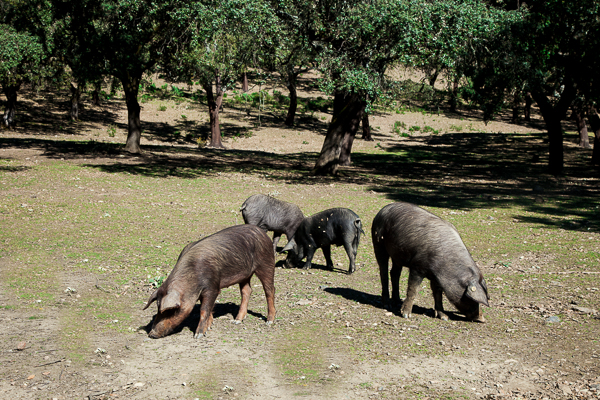 The vegetarians out there may not like this post but I can’t blog about Spanish food without a post about jamon. Jamon is Spain.These rather strange looking, mouldy hams hang in every single bar and restaurant across the country and most likely in every single house at some point in the year.
The vegetarians out there may not like this post but I can’t blog about Spanish food without a post about jamon. Jamon is Spain.These rather strange looking, mouldy hams hang in every single bar and restaurant across the country and most likely in every single house at some point in the year.
But not all hams are equal. Like in wine or whisky, a good one can fetch over 1000 euros. I was always totally confused by the array without any real idea of the difference but I know now that the difference is huge, not only in texture and flavour but also in the nutritional value.
At the lowest end, your jamon serrano could be a pink pig raised on a pig farm in Poland and then cured artificially in a factory in Spain. It will still taste quite good with a hunk of bread and a swig or two of red wine. At the highest end it would be a Pata Negra ( jamon Iberico) a free range black pig raised in the oak forests on a diet solely of acorns.
These oak forests, known in Spanish as ‘dehesas’, spread from Salamanca down along the Spain- Portugal border across to the province of Cordoba.The ham of the Iberian black pig, which grazes its way through life under the acorn trees, is known as bellota ham. Bellota means acorn. The fat that these pigs accumulate is the oil of the acorn which is very similar to olive oil – oleic acid – and is almost as healthy.
This was music to my ears when I first heard it. I tend to be a bit fat phobic when it comes to meat. I cut off as much fat as possible and was doing the same with the ham. I closed my ears to all the protests around insisting I was throwing away the best part – until I heard this gem of information. But do not be fooled – it’s only the fat of the bellota that can make these claims to reduce cholesterol and be good for you.
So for anyone still interested in this topic, let me clarify. Two types of pig: pink ones and black ones. The black ones- cerdo Iberico – are the best. Three types of diet for the black ones and therefore three levels of quality: 1:pure acorn diet 2: acorns and supplementary feed either at the beginning or the end 3: grain fed- no acorns. Only pure acorn fed pigs qualify as bellota
The curing of the bellota takes about two years. It is first salted for two weeks, then washed and hung in a cool chamber for two months, then air dried naturally for up to two years depending on the size. Nothing else – no additives of any kind. I have no idea how the flavour develops all the way through. It comes out slightly sweet, salty and smoked yet it is all just pure meat. The texture is smooth. The fat of a good bellota just melts in your mouth – you don’t even feel it’s there. It’s wonderful!
The Spanish can argue furiously about where the best ham comes from and the truth is there are lots of small family run businesses producing an excellent quality product. If you go directly to one of these you can buy them at a reasonable price. The one shown here is in a tiny village called Pallares on the edge of Extremadura and has been producing jamon bellota for over 20 years.
If you want to have one of these in your kitchen then you need a special cradle and a very sharp knife. The jamon needs to be sliced as thinly as possible and that takes some practice. Connoisseurs never cut their ham with a slicer since the heat of the machine affects the meat. It has to be a knife.
Bellota is hard to come by. It forms only about 8% of Spain’s ham production but if you can get hold of it then do. If not, well, there are lots of others you can still enjoy. With a bottle of wine and good friends it all tastes wonderful!
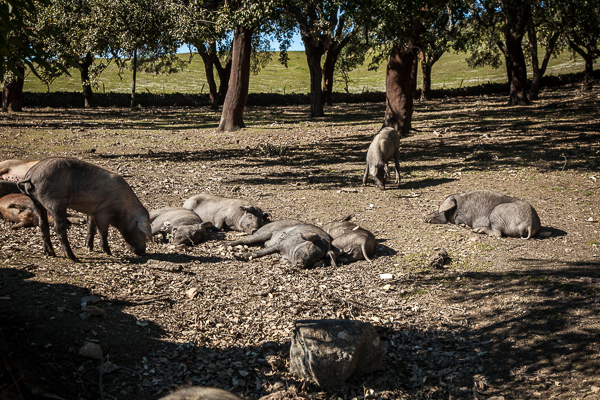
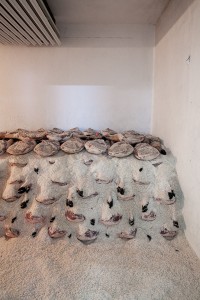
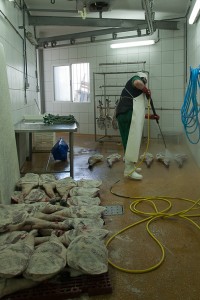
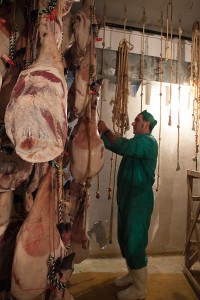
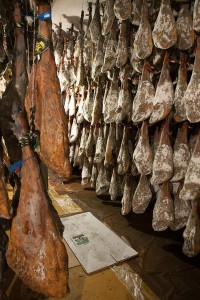
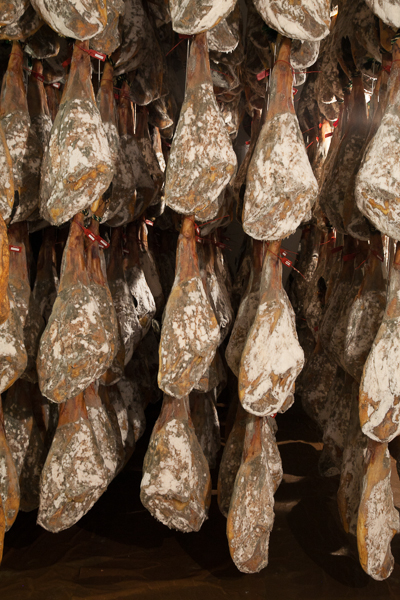
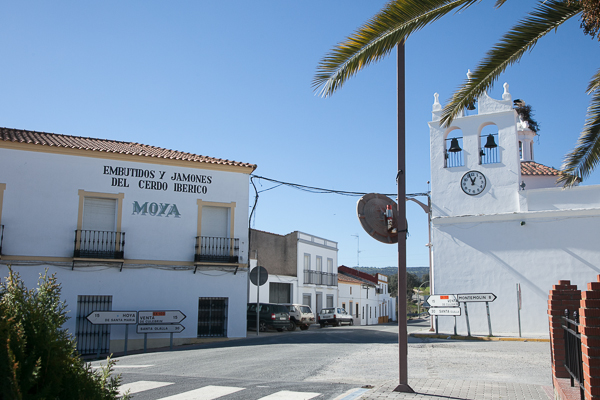
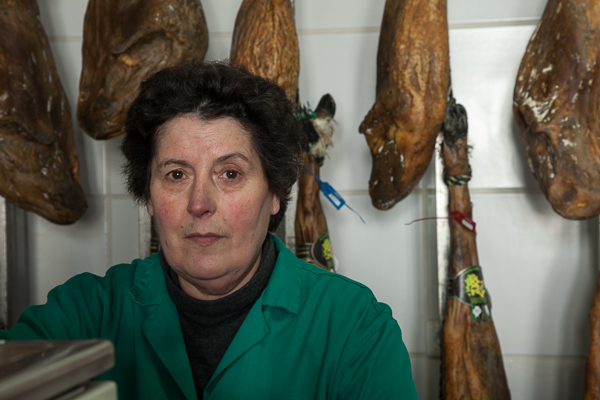
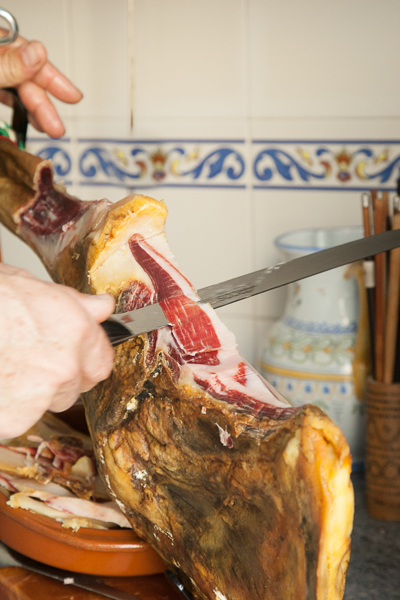
MINKOFF Phil says
Excellent post, Sharon. Can’t wait to try some of the jamon iberico. Don’t tell the rabbi.
Sharon says
time for you to buy a ticket…the black olives are ready too
Phil MINKOFF says
We’ll buy the ticket, you buy the ham, how’s that? If, on the other hand (hoof?) you prefer to come here, we can provide the horsemeat.
liz astill says
Can’t wait to try some of that acorn ham!
nicolas says
it is part of spanish interior design!
Sharon says
yes, it is and I never thought it would be part of mine…but never say never!
Amelia says
Well, very good entry. That is one of the many treasures in Spain…. and definitely one of my favourite ones…. You have to make one about anchovies, and Tresviso-Bejes when you come to the North!!!!
Sharon says
Yes, definitely. I will….!
Julia Ruiz says
Excellent Sharon.
elina says
Con tanto jamon a la vista, se me cae la baba!!!!